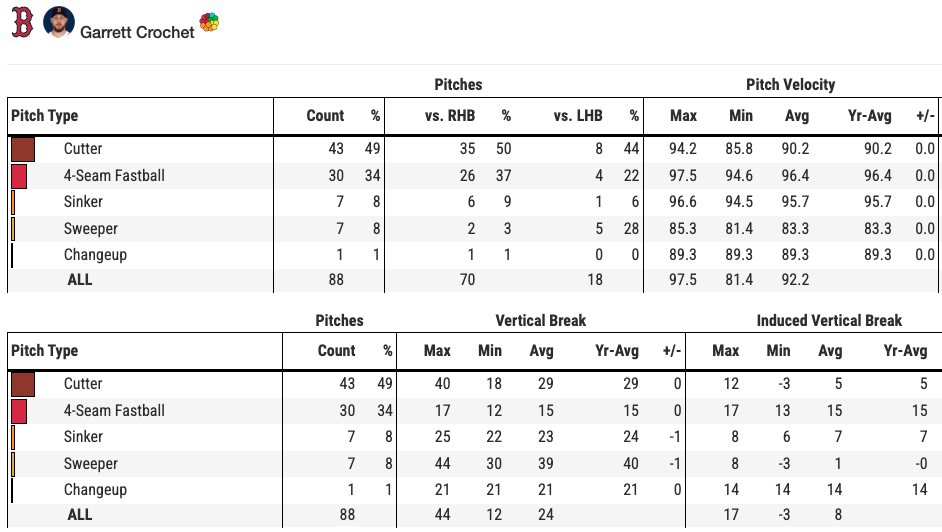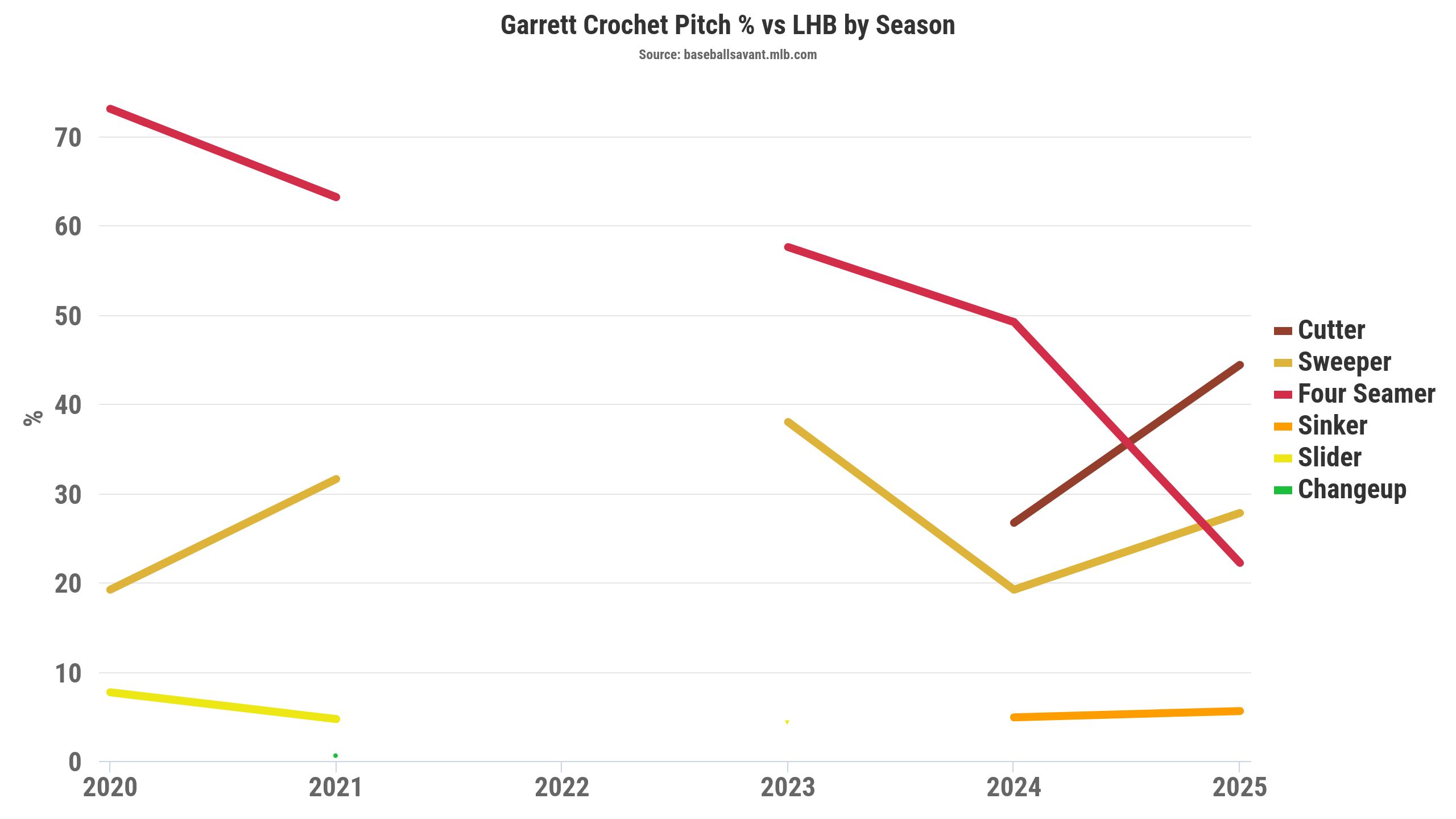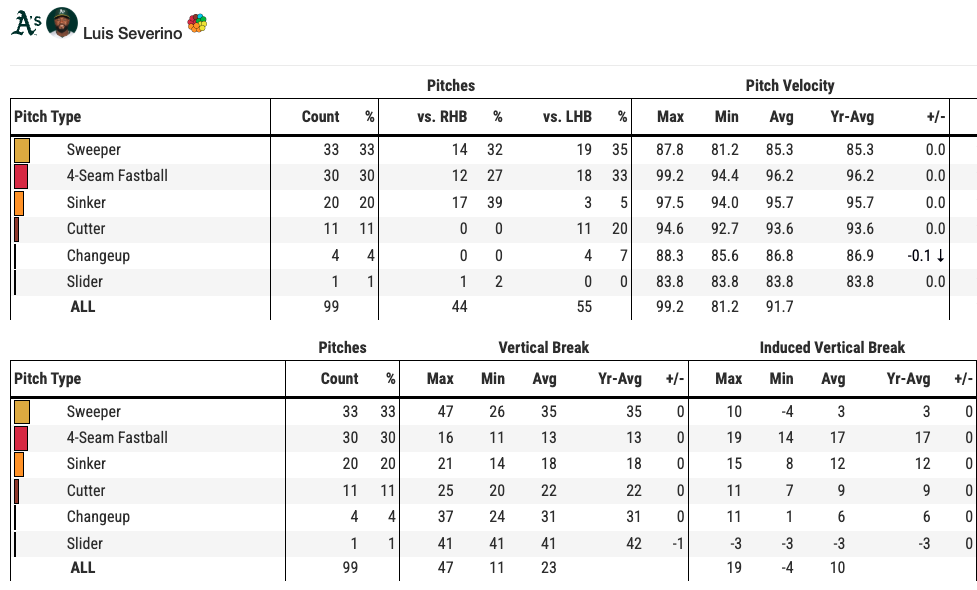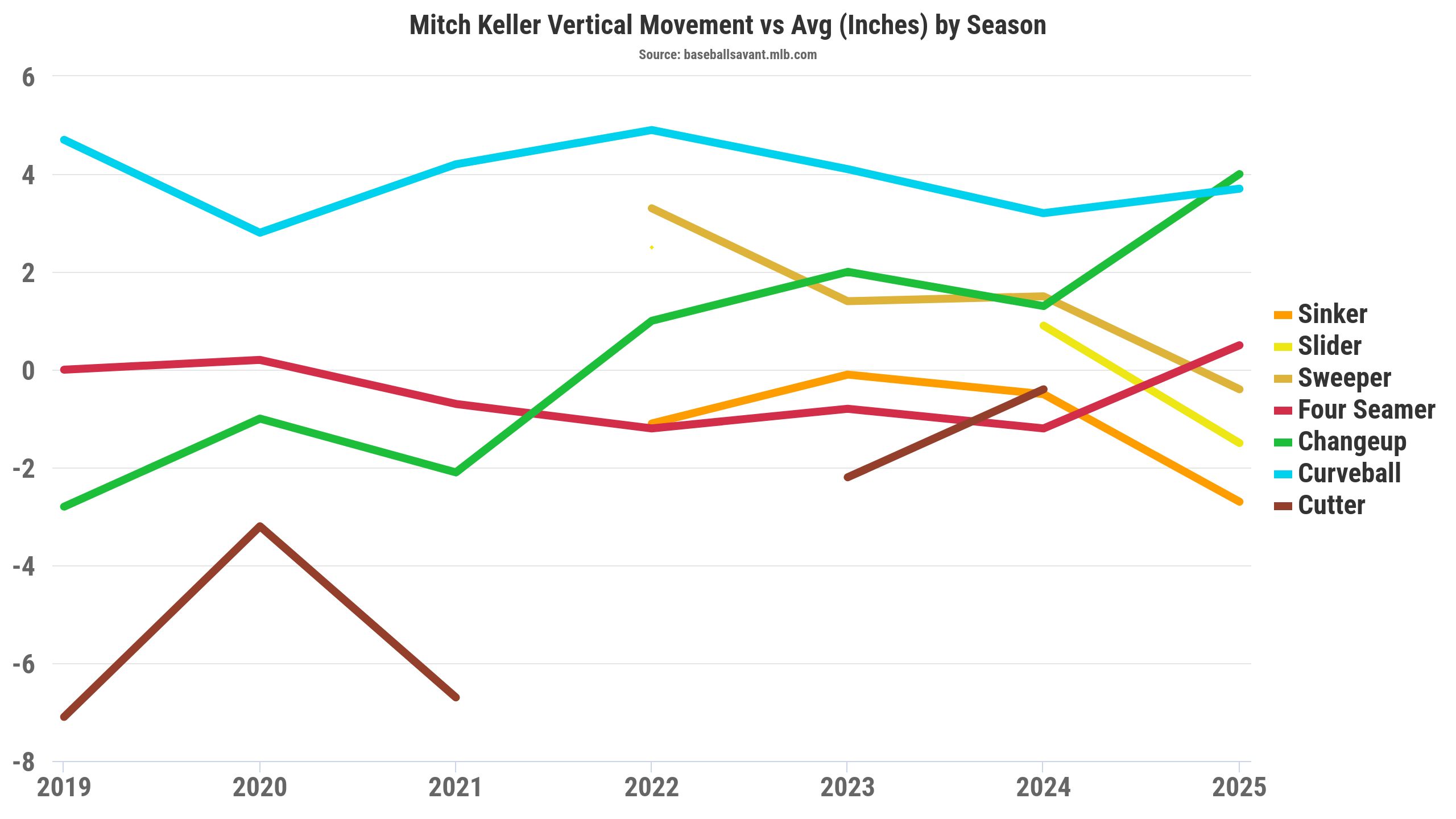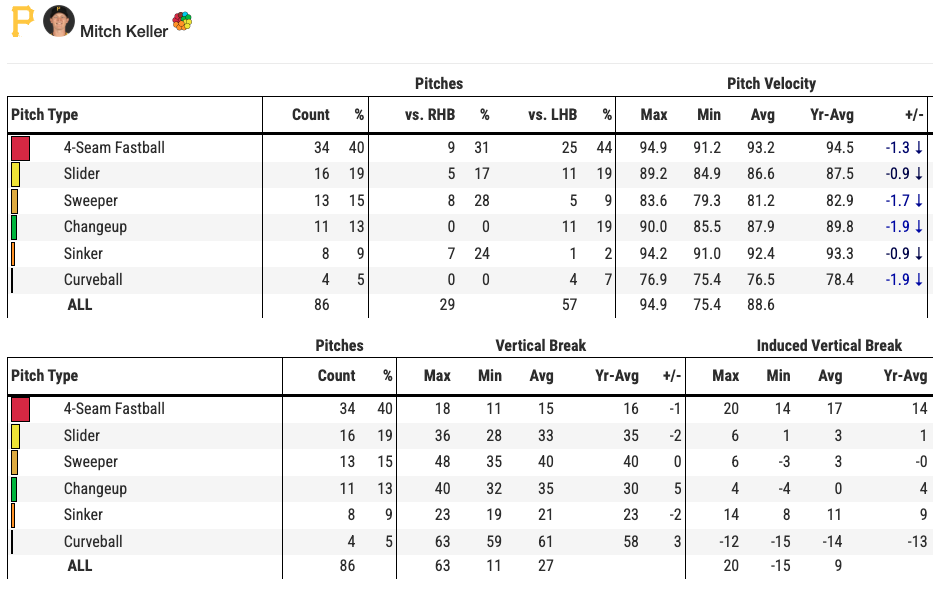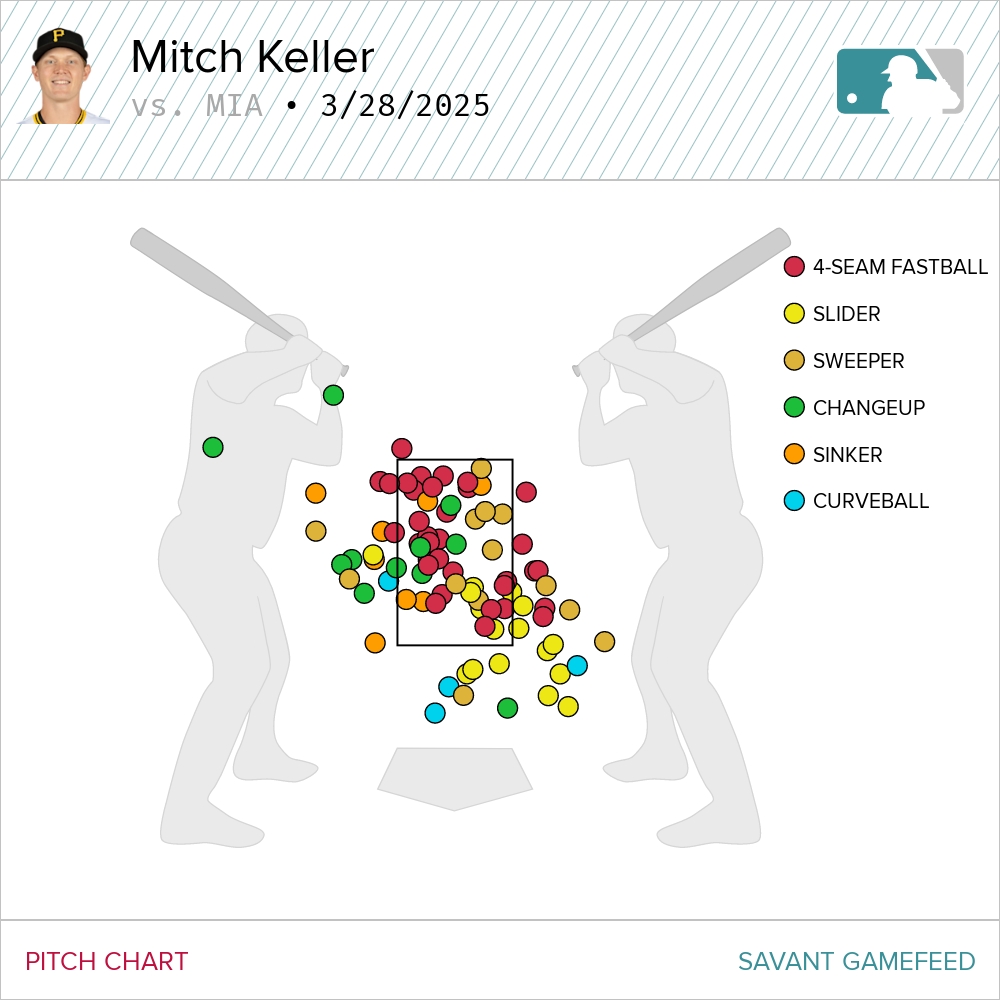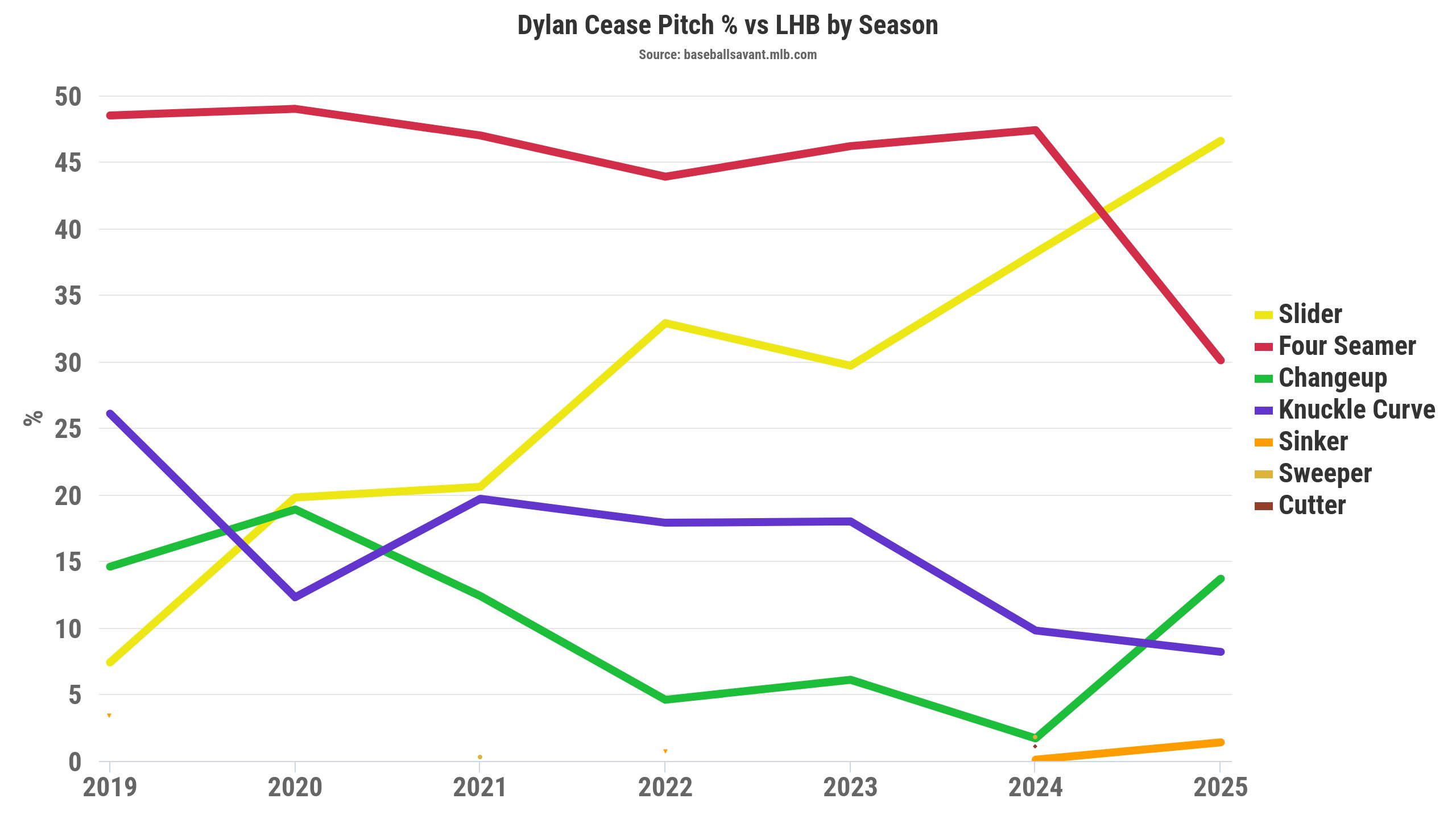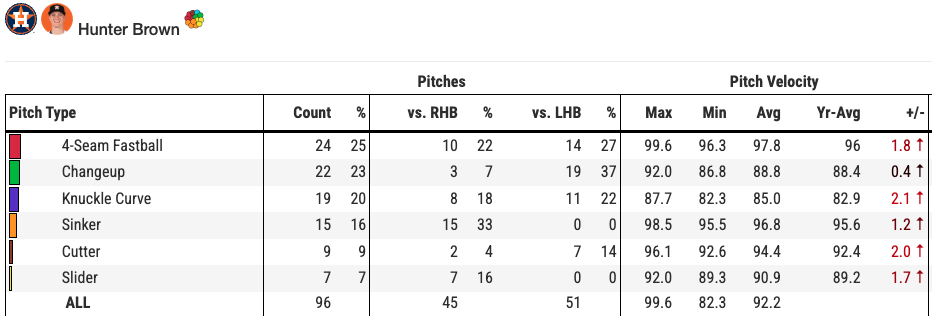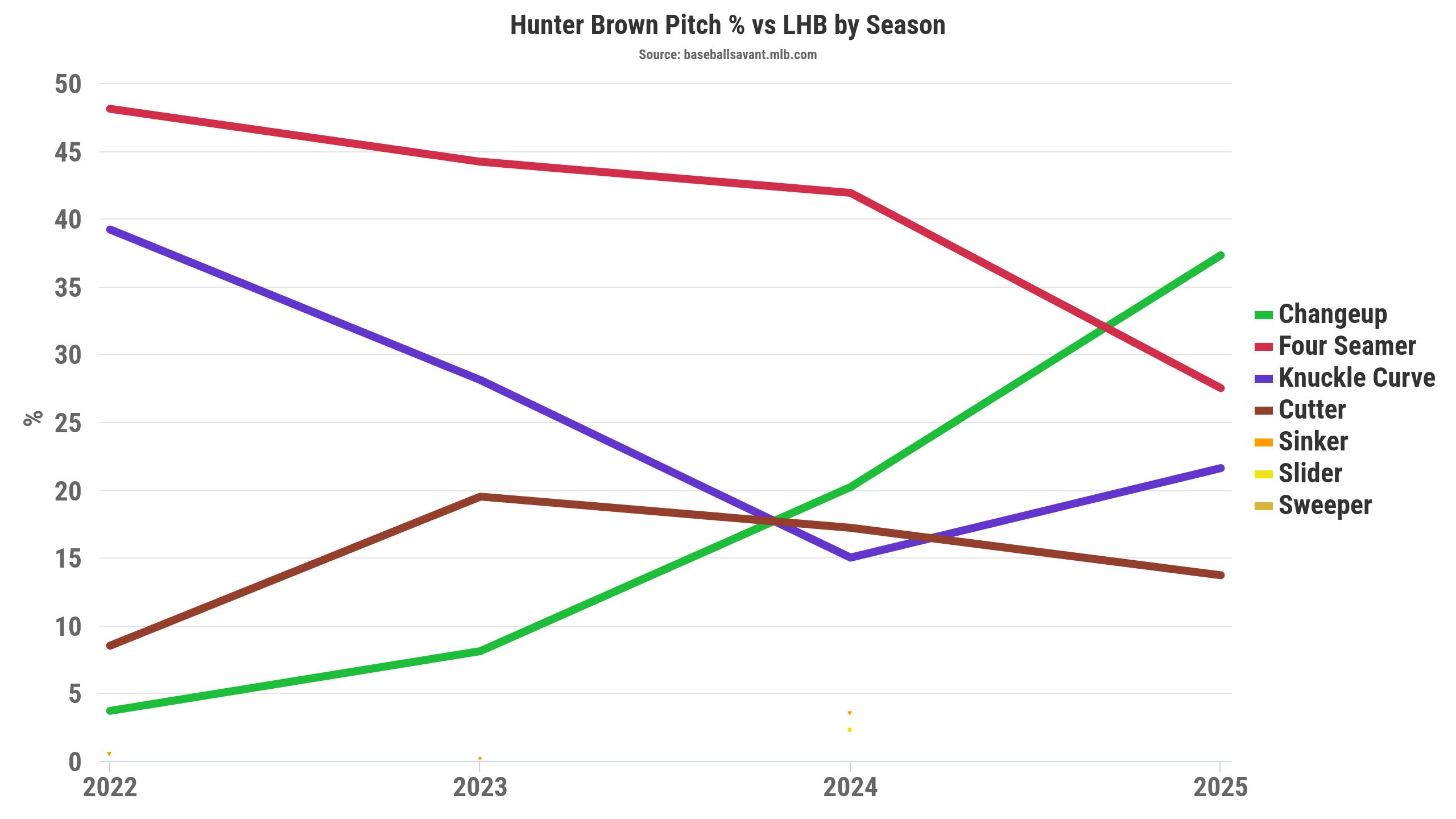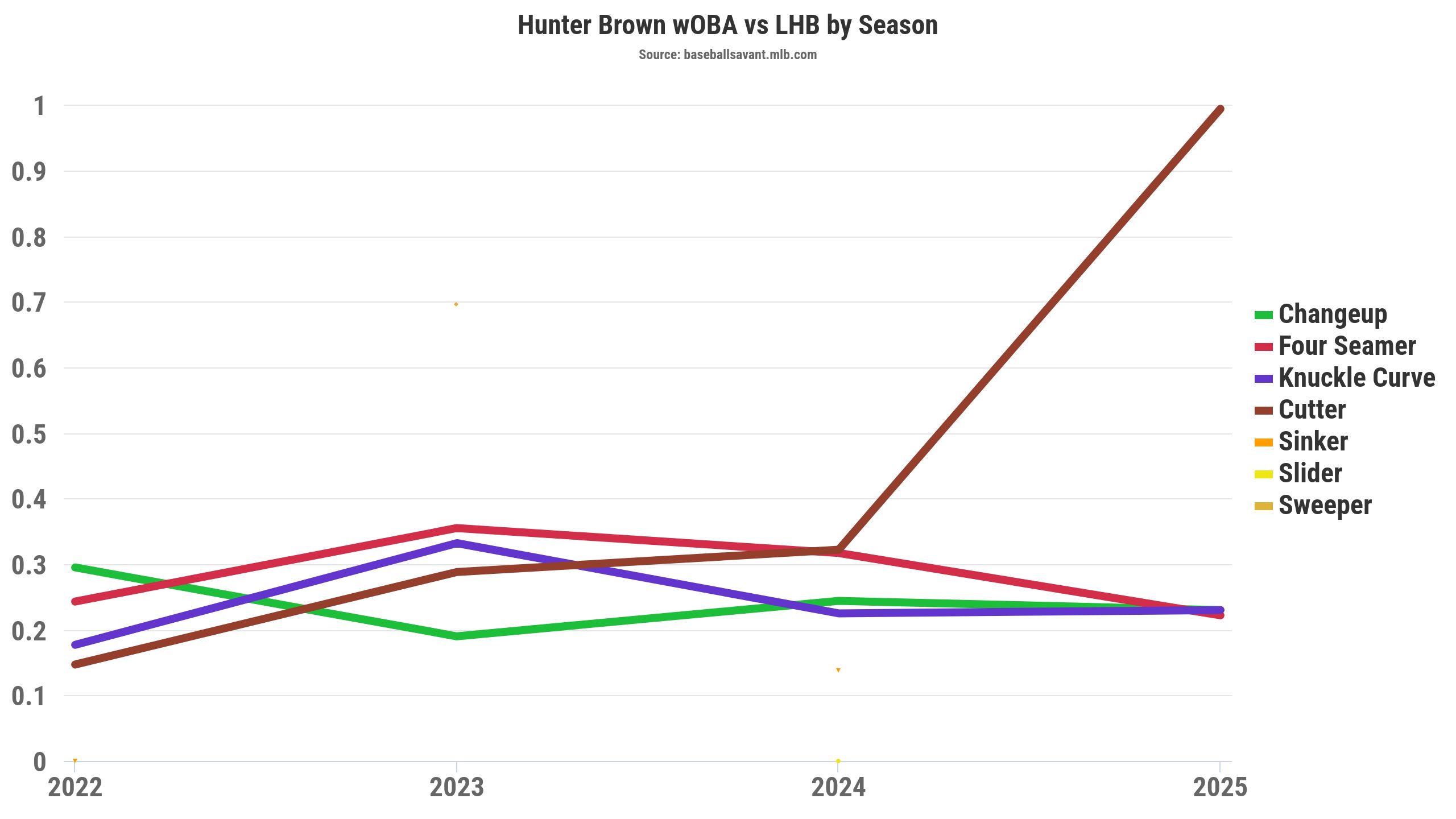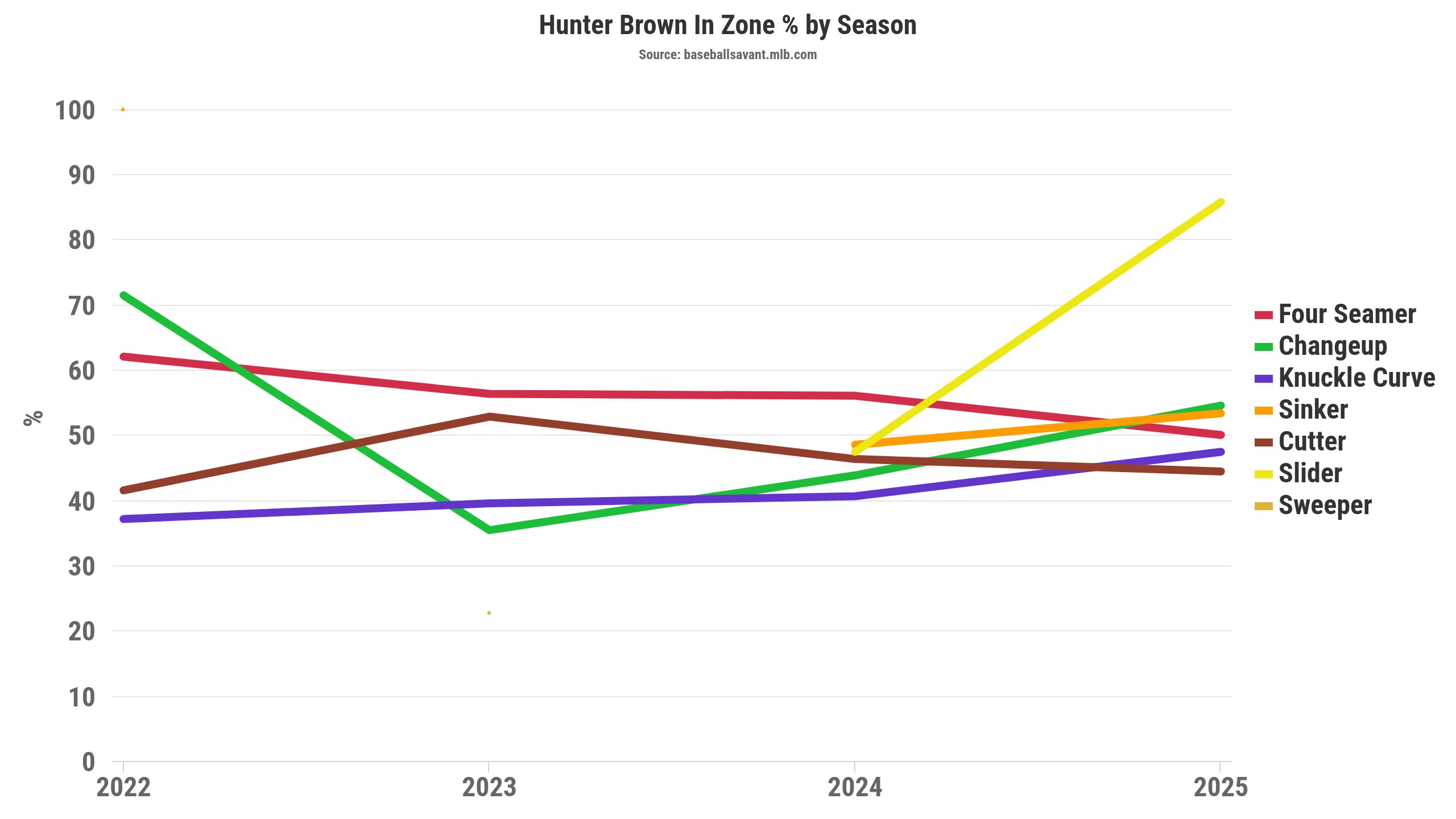Corbin Young examines two fantasy baseball pitcher risers and sleepers displaying changes in their pitch mix, movement, and velocity heading into Week 2 (2025).
Welcome back, RotoBallers, to my weekly "Starting Pitcher Arsenal Changes" article series for Week 1 of the 2025 fantasy baseball season. Today's article will discuss several starting pitchers who pitched during the first few days of the regular season. For those new to this column, we cover a few starting pitchers and their arsenal changes via pitch mix, velocity, and movement each week.
Since it's early, we're looking for new pitches, velocity, and movement changes. With these pitchers having one start, we'll compare them to the 2025 Spring Training Data and the 2024 numbers to identify any differences or similarities. We noticed release point changes in Spring Training, potentially impacting their movement profiles in 2025.
Pitchers can make notable changes in smaller samples, so let's see if we can find something with these starting pitchers. Statcast introduced pitch percentage splits by left or right-handed batters, which adds a nice layer to compare quickly to past seasons. Let's look through my process of examining starting pitchers and their arsenals. Reach out to me on X if you have a pitcher you have questions about. This is the first article of this series for the 2025 season. Thank you for reading!
Be sure to check all of our fantasy baseball lineup tools and resources:- Fantasy baseball trade analyzer
- BvP matchups data (Batter vs. Pitcher)
- PvB matchups data (Pitcher vs. Batter)
- Who should I start? Fantasy baseball comparisons
- Daily MLB starting lineups
- Fantasy baseball closer depth charts
- Fantasy Baseball live scoreboard
- Fantasy baseball injury reports
Garrett Crochet Threw More Cutters
Against the Rangers on Opening Day, Crochet threw tons of cutters against righties (50 percent) and lefties (44 percent). That led to a 20.9 percent swinging strike rate via the cutter. Crochet's cutter generated a 17.5 percent swinging strike rate in 2024.
That's notable because Crochet threw cutters 28.5 percent of the time against righties and 26.7 percent against lefties in 2024. Crochet tossed aside the four-seamer to a career-low (22.2) against left-handed hitters in his one-start sample with the Red Sox.
However, that's part of the trend with Red Sox starting pitchers, going away from their four-seamers last season. The same trend occurred against right-handed hitters, with the four-seamers thrown going from 54.6 percent (2024) to 37.1 percent (2025) in his Opening Day outing.
It's unlikely for Crochet's cutter to elicit tons of whiffs like in his first outing, evidenced by a 20.9 percent swinging-strike rate. For context, cutters generated a swinging strike rate of 11.5 percent in 2024. Based on the Red Sox's pitching trends, Crochet should continue to lower his four-seamer usage in 2025. He needs a second consistent offering against opposite-handed hitters because he lacks a second reliable pitch unless the changeup develops into something with more confidence.
Luis Severino Leaned On the Sweepers
Severino threw sweepers 33 percent of the time on Opening Day against the Mariners. He increased his sweeper usage against right-handed hitters (32 percent) and lefties (35 percent) compared to 2024. For context, Severino threw sweepers 21 percent of the time against righties and 13.6 percent versus lefties.
We saw the ridiculous backdoor sweepers, but it didn't generate many whiffs, evidenced by a 12.3 percent swinging-strike rate on Opening Day. Severino's sweeper zone rates caught our eye, being thrown in the zone 30 percent of the time against the Mariners. That's notable because that's about 10-12 percentage points below his career average.
Severino might've had issues commanding the sweeper, though it continued to limit weak contact against right-handed hitters (.179 wOBA, .197 xwOBA) in 2025, similar to 2024 (.144 wOBA, .174 xwOBA). That's a solid approach to throw more sweepers for Severino, though the main issues involve the lack of reliable pitches versus left-handed hitters.
Additionally, monitor Severino's cutter and changeup against lefties as he shifts away from the four-seamer.
Mitch Keller's Changeup
In Spring Training, Keller threw changeups 15.7 percent of the time. That would be the highest rate in his career, with a previous high of 6.5 percent in 2022, mainly against left-handed hitters (10.2 percent). Keller's changeup added over four inches of depth while losing an inch or so of arm-side fade in Spring Training.
That could unlock Keller's arsenal if it's a consistent and reliable offering to left-handed hitters. Against the Marlins in his first start, Keller threw all his changeup (11) to lefties (19 percent). The changeup kept the arm-side fade around 35 inches, nearly five more inches than in 2024.
Keller pounded the zone with the four-seam, having a 79 percent zone rate against the Marlins. For context, Keller's four-seamer had a zone rate of 56-58 percent throughout his career.
That suggests Keller commanded his four-seamer well, with the slider, sweeper, and changing pairing well. It's a one-start sample, but continue to monitor Keller's changeup because that can help neutralize lefties.
Dylan Cease's "Real" Changeup
Last season, Cease threw 28 changeups, averaging under 70 mph (69.7), so we're dealing with a small sample. In Cease's first start against the Braves, he threw a change 10 times, all to lefties (14 percent). Most notably, Cease's changeup averaged 79.1 mph, a 9.4-point jump in velocity.
Unsurprisingly, Cease is throwing a harder changeup, contrary to the ridiculously slow one. That led to his changeup losing 12 inches of downward movement with four more inches of arm-side fade. Why is Cease's changeup noteworthy?
Cease's changeup is noteworthy because he mainly throws sliders (47.7 percent) and four-seamers (39.7 percent) against right-handed hitters. The pitch usage flipped to more four-seamers (47.4 percent) and sliders (38.8 percent) versus lefties. He sprinkles in a knuckle curve against left-handed hitters (9.8 percent), but the changeup could unlock another level of whiffs and weak contact.
Hunter Brown's Pitch Mix Change and Added Velocity
Like the Kanye West song "Stronger," Brown made it better and did it faster. Brown threw most of his pitches more than one mph faster, evidenced by the four-seamer (1.8 mph), knuckle curve (2.1 mph), sinker (1.2 mph), cutter (2.0 mph), and slider (1.7 mph).
Since Brown threw most of his pitches harder, they lost vertical drop by one to three inches, with the four-seamer adding two inches of arm-side fade. Brown made a pitch mix change in his first start, throwing more knuckle curves (22 percent) and changeups (37 percent) against left-handed hitters.
For context, Brown threw changeups 20.2 percent of the time and knuckle curves 15 percent of the time in 2024 versus opposite-handed hitters. They were both of his best pitches, with the changeup allowing a .244 wOBA (.272 xwOBA) and knuckle curve resulting in a .225 wOBA (.211 xwOBA) against lefties.
Brown wasn't a draft target because pitch-level swinging strike rates and pitch movement profiles haven't warranted better outcomes. However, the pitch mix change and added velocity might be notable unless it's a noisy early-season sample.
The other interesting note for Brown involved the higher zone rates for the changeup (55 percent) and knuckle curve (47 percent) in his first start against the Mets. That's notable because Brown's changeup was thrown 43.8 percent of the time in the zone in 2024, with the knuckle curve having a zone rate of 40.6 percent.
Typically, pitchers throw changeups (39 percent) and curveballs (43.1 percent) in the zone, similar to Brown's 2024 numbers. So, Brown's one-start sample in 2025 might be an outlier, though we should put weight into the pitch mix change and velocity increase.
Download Our Free News & Alerts Mobile App
Like what you see? Download our updated fantasy baseball app for iPhone and Android with 24x7 player news, injury alerts, sleepers, prospects & more. All free!






 RADIO
RADIO








